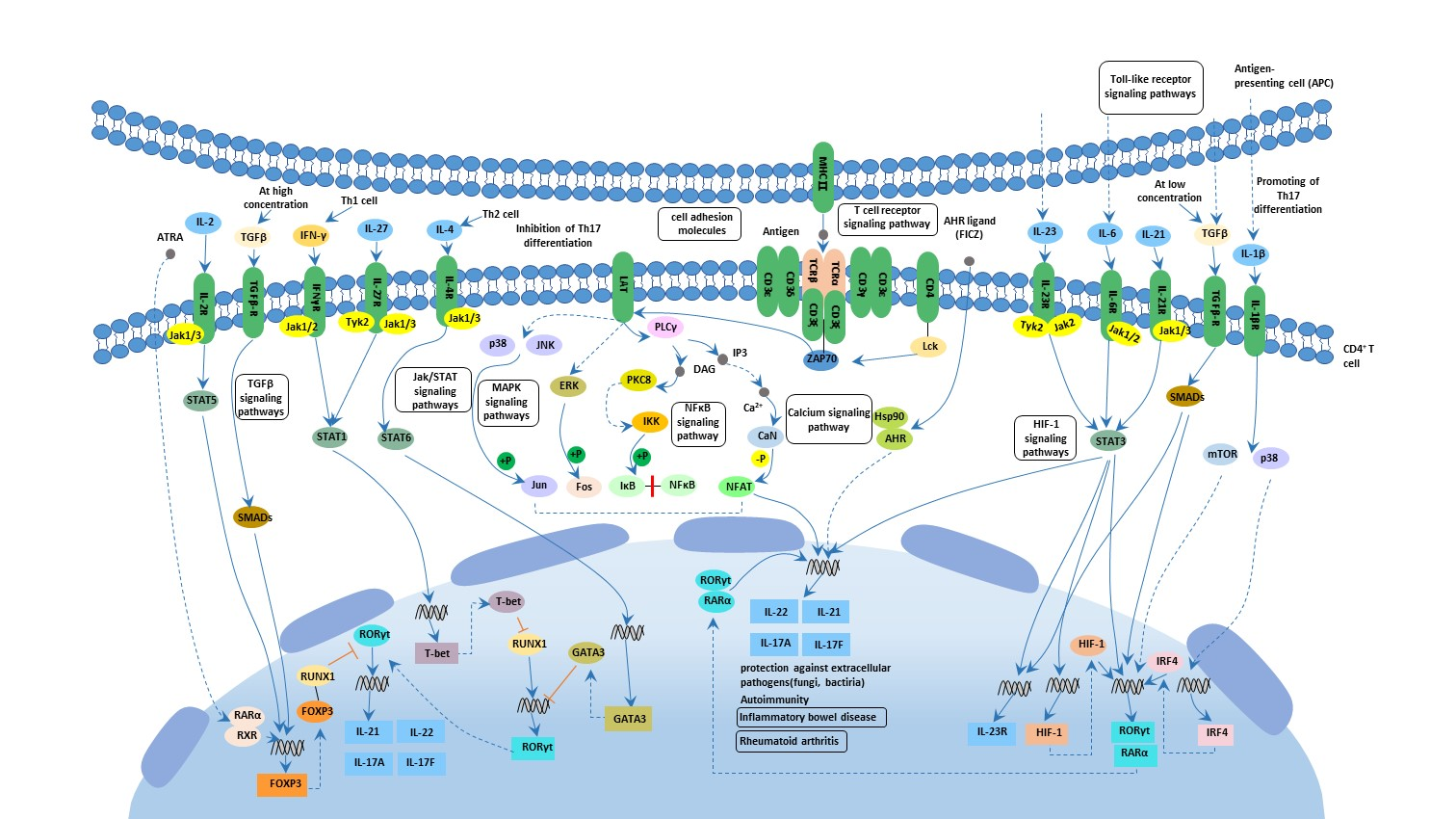
Discovery of Th17 Cells
Th17 cells are a subgroup of cells that secrete IL-17, or IL-17A, which was discovered in 2003. Th17 cells, together with Thl, Th2 and Tregs, constitute four subsets of CD4+T cells. Th17 cells are differentiated by Th0 cells under the stimulation of IL-6 and TGF-β. It plays a key role in immune regulation, host defense and autoimmune diseases.
Th17 Cell Differentiation
Binding of the antigen to the T cell receptor (TCR) is the first step in the T cell activation process. However, the role of strong and weak TCR signaling in Th17 differentiation is still unclear.
Th17 cell differentiation mainly includes three stages of induction, amplification and stabilization. At each stage, the differentiation of Th17 cells is regulated finely and complexly by a variety of cytokines and signaling molecules.
In the induction phase, TGF-β and IL-6 act as major inducers to promote Th17 cell differentiation. Excessive concentrations of TGF-β will induce the expression of Foxp3 and antagonize the differentiation of the transcription factor RORγt, thereby inhibiting the differentiation of Th17 cells.
During the amplification phase, cytokine IL-21 promotes or maintains Th17 cell differentiation in a STAT3-dependent autocrine manner.
The stabilization phase is primarily maintained by IL-23. IL-23 binds to its receptor and activates the JAK-STAT signaling pathway, which leads to phosphorylation of Jak2 and Tyk2, which in turn promotes signal transducer and activator of transcription1 (STAT1), STAT3, STAT4 and STAT5 Phosphorylation.
Positive regulators of this pathway include: TGF-β, IL-6, IL-9, IL-1, IL-23, IL-21, IRF4, STAT3, RORα and RORyt.
Negative regulatory factors include: IL-2, IL-4, IL-27, STAT1, STAT5, Socs3, Ets-1 and IFN-γ.
Effector Molecule of Th17 Cells
The effector molecules produced by Th17 cells mainly include IL-17A and IL-17F. IL-17A and IL-17F can act on a variety of cell types to induce the production of cytokines, chemokines and metalloproteinases. In addition, Th17 cells secrete IL-21 and IL-22. IL-21 regulates Th17 differentiation in the form of autocrine. IL-22 exerts its effects through its receptors.
Th17 Cell Related Diseases
The main function of Th17 cells is to promote the mobilization, recruitment and activation of neutrophils and mediate pro-inflammatory responses. It is closely related to the occurrence of autoimmune diseases, infectious diseases and tumors.





